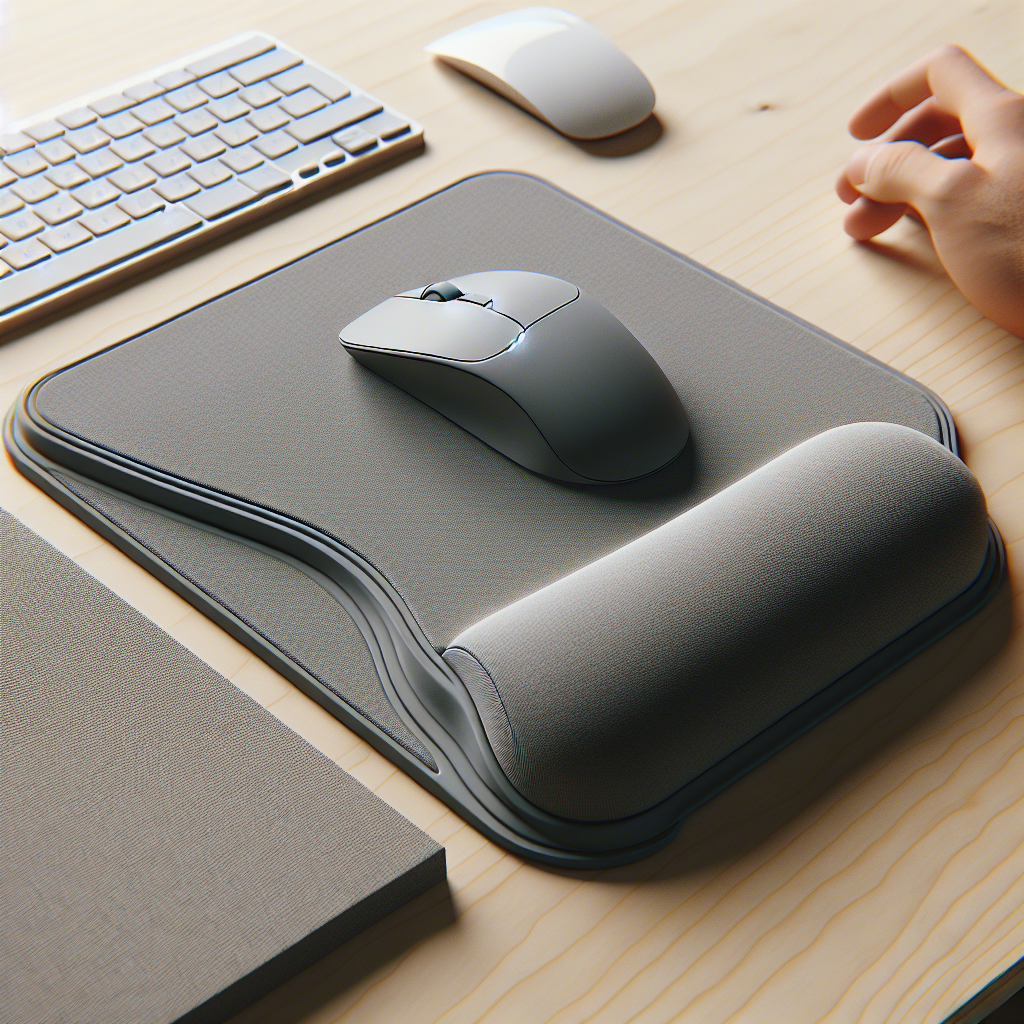What is an ergonomic mouse pad?
In today’s fast-paced digital environment, extended hours spent at the computer can lead to discomfort and various health issues. To combat this, ergonomic mouse pads have emerged as essential tools for improving user comfort and productivity. But what exactly is an ergonomic mouse pad, and how does it benefit you? This article delves into the intricacies of ergonomic mouse pads, their features, benefits, and the various types available in the market.
| Feature | Description |
|---|---|
| Material | Soft foam, gel, or cushioning that provides comfort |
| Wrist Support | Built-in padding to support wrist positioning |
| Size Options | Various sizes to fit different workspace needs |
| Non-Slip Base | Stable grip to prevent movement during use |
| Surface Texture | Optimized for mouse tracking precision |
Understanding Ergonomics
Before diving deeper into the specifics of ergonomic mouse pads, it’s crucial to understand the concept of ergonomics. Ergonomics refers to the study of designing equipment and devices that fit the human body and its cognitive abilities. The goal of ergonomics is to optimize human well-being and overall system performance.
Why Use an Ergonomic Mouse Pad?
Using an ergonomic mouse pad can minimize strain while using a computer, offering several advantages:
- Reducing Repetitive Strain Injuries (RSIs): Ergonomic mouse pads help prevent issues like carpal tunnel syndrome by promoting a healthier wrist posture.
- Improving Comfort: These pads provide cushioning support, making long hours at the computer more tolerable.
- Enhancing Precision: A well-designed surface ensures smooth tracking for better cursor control.
- Maintaining Good Posture: Correct wrist positioning keeps the arm and hand aligned properly, supporting overall posture.
Types of Ergonomic Mouse Pads
Ergonomic mouse pads come in various types, each catering to different needs and preferences. Below are the most common types:
- Standard Ergonomic Mouse Pads: These pads feature basic wrist support and a comfortable surface for mouse movement.
- Wrist Rest Mouse Pads: Incorporating a cushioned wrist rest, these pads emphasize wrist alignment and comfort.
- Gel Mouse Pads: Filled with gel material, they offer enhanced cushioning that conforms to wrist shape.
- Contour Mouse Pads: Designed with an ergonomic shape, they provide additional support for the wrist and forearm.
- Vertical Mouse Pads: These are designed for those who use vertical mice, providing support in upright wrist positions.
Features to Look for in an Ergonomic Mouse Pad
When searching for the perfect ergonomic mouse pad, consider the following features:
- Wrist Support: Look for pads with built-in gel or foam wrist rests.
- Non-Slip Base: A non-slip underside is crucial for stability during use.
- Surface Material: The pad should have a smooth, durable surface that allows for precise mouse movements.
- Size: Ensure the pad fits well on your desk and accommodates your mouse movement style.
- Ease of Cleaning: Opt for materials that can be easily wiped down or washed.
Benefits of Using an Ergonomic Mouse Pad
Adopting an ergonomic mouse pad can lead to substantive benefits in your daily computing habits:
- Enhanced Comfort: Experience immediate relief from discomfort caused by traditional mouse pads.
- Increased Productivity: Comfortable users tend to be more focused and productive.
- Health Considerations: Minimize the risk of developing chronic conditions associated with improper ergonomic setups.
Choosing the Right Ergonomic Mouse Pad
To select the mouse pad that best fits your needs, consider the following:
- Your Mouse Type: Ensure compatibility with your mouse’s design, particularly for vertical mice.
- Workspace Setup: Assess your desk space and workflow, ensuring you choose a size that allows for freedom of movement.
- Personal Preference: Some prefer softer gel pads, while others may prefer firmer materials.
Tips for Proper Mouse Use with an Ergonomic Mouse Pad
To maximize benefits, follow these tips while using your ergonomic mouse pad:
- Keep Your Wrist Straight: Maintain a straight wrist position while using your mouse.
- Adjust Your Chair Height: Ensure your chair is at a height that allows your upper arm and forearm to form a 90-degree angle.
- Frequent Breaks: Take regular breaks from prolonged mouse use to reduce fatigue.
Conclusion
In summary, an ergonomic mouse pad is more than just an accessory; it is a vital tool that can significantly enhance comfort, reduce the risk of injury, and improve overall productivity while working on a computer. By understanding the types of ergonomic mouse pads available, their benefits, and the importance of proper use, you can create a more comfortable and efficient workspace.

Leave a Reply